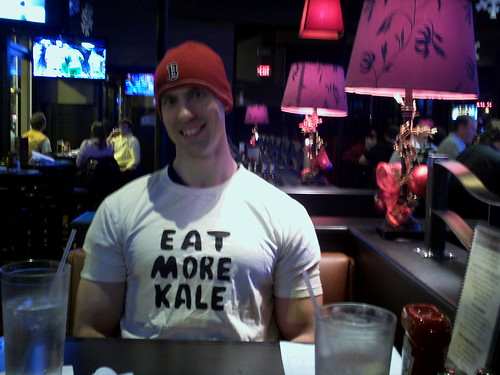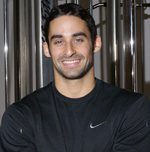Either later this week, or most likely next week, my latest article on Livestrong.com will come out titled Tips for a Badass Bench.
In it, I discuss some of the variables that get overlooked when it comes to benching. Namely, how to properly set-up.
It’s not the sexiest topic in the world, and I can only imagine how many people will roll their eyes and scoff, but it’s a topic that often gets drastically overlooked. In fact, I’d garner a guess that if more people paid attention to how they set-up, and not just flop themselves on the bench like a dead fish, they’d see a drastic improvement in their benching performance.
But all of that is for another time. Today, rather, I’m going to share with you a section that I had to omit due to word count restrictions. In no uncertain terms, I submitted the original version and received a comment back from my editor along the lines of “WTF Tony??????”
Which was was her way of saying, “lets cut this bad boy down a few hundred words. Whadya say?”
Nevertheless, I did exactly that but figured the information was still valid and could be useful for a lot people out there reading. Soooo, here you go. Enjoy.
Tips for a Badass Bench (the part I had to ax)
As with any exercise, the bench press follows a strength curve. Meaning, depending on length-tension relationships of the muscles involved with the movement, certain portions of the lift may be more problematic than others. For instance, some trainees tend to have more trouble off the chest, and tend to miss the lift during that portion. On the flip side, some may lower the bar to the chest, crush it, and then stall mid-way through or even closer to lockout.
Or, you know, you’re delusional and the weight could simply be too heavy.
Just throwing it out there……..
Everyone’s different.
Speaking in general terms, however, for those who tend to miss off the chest, some dedicated speed work may be in order.
In other words, getting faster will undoubtedly help you get stronger.
I go into a little more detail on this in the actual article (which I’ll link to once it’s available), but suffice it to say placing a little more emphasis on bar speed, and subsequently, possessing the ability to plow through any sticking point will go a long way in terms of increasing one’s bench pressing prowess.
Relative to most trainees reading, though – especially beginners and intermediates – it wouldn’t hurt to incorporate some high(er) rep dumbbell presses into the mix. Dumbbells allow for a bit more range of motion compared to the bench press, which, for those who tend to be weaker off the chest, can come in handy.
For those who seem to stall halfway up, or even at lockout, board presses would be very useful. Below is a video of Jen Comas Keck board pressing her ass off. She’s a lot better looking than me, so I figured the guys reading would appreciate the hook up. And, for the ladies, they’d have the opportunity of seeing another female lifting appreciable weight.
Basically, while board presses do decrease the range of motion, they allow you to overload the ROM where you’re weakest.
Simply put, you take a pair of 2-by-4s and either tape or nail them together. From there, either have someone hold them in place on your chest or just stick them underneath your shirt.
You set up as you normally would, un-rack the bar – with a hand-off, of course – lower the bar to the boards and come to a pause; let the bar sink into them, and then press as explosively as you can.
The above is an important point because many trainees tend to use more of a tap-n-go approach which is flat out wrong.
Using a variety of boards – 1 board, 2 boards, even 3 and 4 boards – is a fantastic way to help increase your bench. But only use them sporadically and not as a substitute for full-range bench press variations.
And finally, as counterintuitive as it may seem, spending more time building the backside of your body can come in handy when trying to increase your bench press. Firstly, from a postural standpoint, training the backside can help to offset many of the imbalances that can arise when benching too much. Yeah, I’m talking to you.
It’s not un-common for many coaches and trainers to program more horizontal rowing variations like seated rows, 1-arm dumbbell rows and chest supported rows to help retain more structural balance. In fact, it’s not un-common to see some coaches program two to three rowing variations for every ONE pressing variation.
Also, having a strong – and thick – upper back will provide more of a base of support to bench from. Look at the backs of any lifter who has an impressive bench – powerlifters are a great example. They’re backs are ginormous.
You can’t expect to build an impressive bench press JUST by bench pressing. While specificity is important, you also need to address your weaknesses. And for many, it’s a small and weak upper back.
Nothing revolutionary, by any means, but hopefully these tips shed some light on a few of my thoughts; and trust me, the full article will be way m0re boss.
Have any of your own tips? Chime in below……
And remember, I’ll keep you posted on the actual – full length – article as soon as it’s up.






